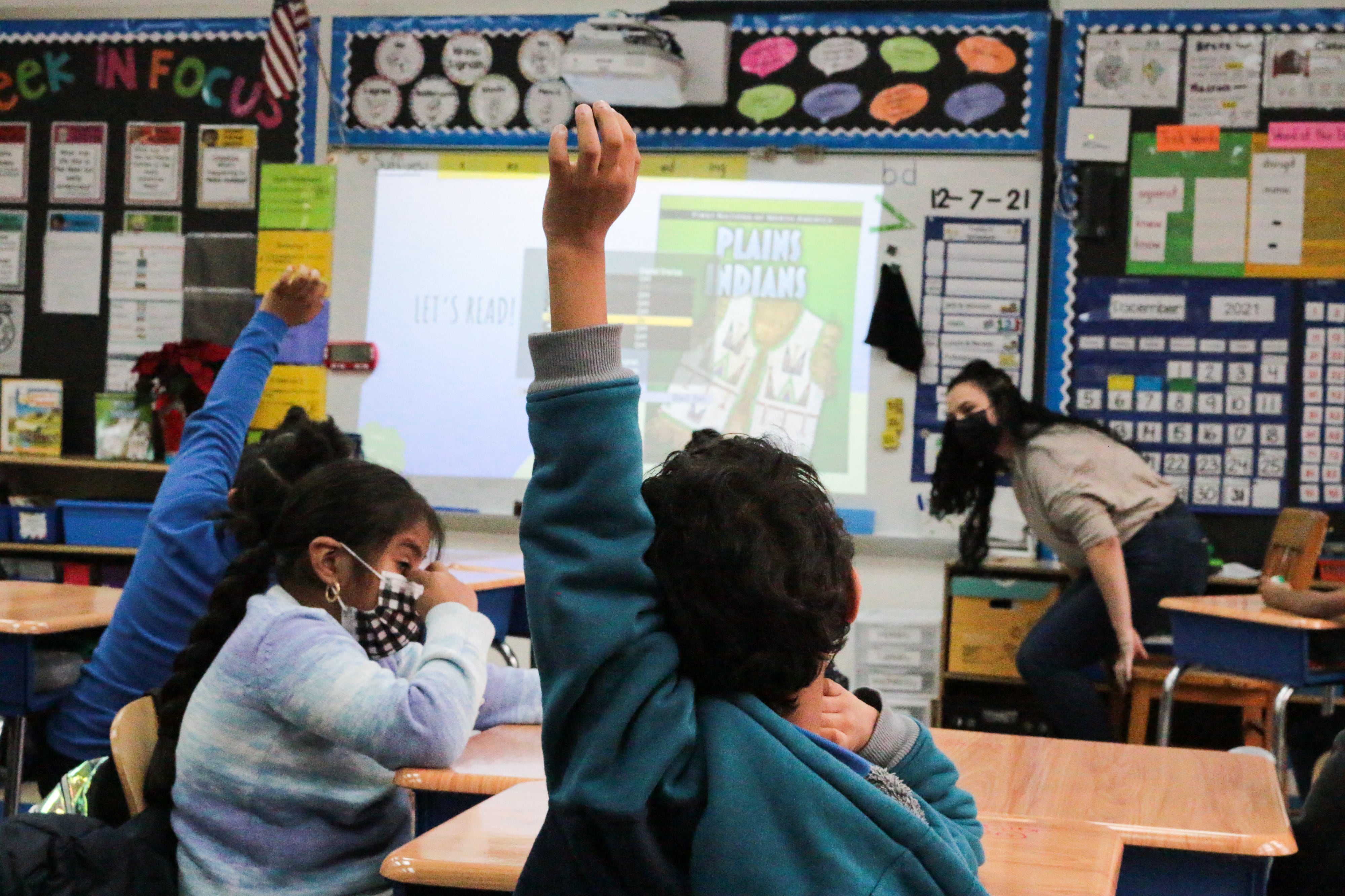Mayor Eric Adams has made literacy a priority, promising to overhaul reading instruction in New York City schools.
Educators agree it’s a critical moment. Even before the pandemic, fewer than half of students in grades 3-8 were reading on grade level, according to state tests. Now, interrupted learning has only heightened concerns that students have been knocked off track.
To preview some of the initiatives expected this coming year, Chalkbeat on Aug. 10 convened a group steeped in New York City’s literacy push from various perspectives — a top education department official, an academic expert, a principal, a teacher, and a parent of children with dyslexia. (See below for the video of the event.)
Carolyne Quintana, the education department’s deputy chancellor for teaching and learning, shared some insights around the city’s push to incorporate more phonics in K-2 classrooms across the five boroughs, along with more training for teachers. Some smaller scale initiatives: Two new elementary school programs will target children with reading challenges including dyslexia, and about 160 elementary and middle schools will receive extra training on literacy strategies and different types of interventions for struggling readers.
In terms of the big picture, one goal is to increase awareness of reading challenges among educators so they “understand what the different and varying needs of students with reading challenges may be,” Quintana said.
To that end, the education department is providing all K-12 teachers with a two-hour training from Made by Dyslexia, and will have literacy coaches in K-12, unlike previously, where coaches were provided for K-2 classrooms. (At the same time, however, the city is shrinking the number of literacy coaches from 500 to 200.)
A lot of this work, however, takes time, and questions remain about the many struggling readers who may not have challenges as severe as dyslexia, or might be in older grades, which the new phonics push won’t reach.
Katie Pace Miles, an associate professor at Brooklyn College, CUNY, offered a possible solution: scaling up tutoring programs with teachers-in-training.
This past year CUNY trained 650 students from the university system’s education schools in “evidence- and research-based programs” and placed them in schools where they worked one-on-one with first and second graders, explained Miles, who is the academic advisor for Reading Rescue and the creator of Reading Ready, both of which are reading intervention programs.
“These are readers who may not be individuals with dyslexia,” she said. “Some of them may be. We’ll know more once we do this tutoring work, and we have evidence from assessments.”
Scaling up such a program is crucial, she said.
“That’s one really important thing that we need to do because the urgency is immediate. It’s right now for the students coming out of the pandemic. We can’t wait for a school to get going with the phonics curriculum,” Miles said. “These students need the interventions straight away.”
If money were no object, here are other ideas the panelists believe would help most when it comes to reading instruction:
- “If we had all the money in the world, we would be able to pay teachers to come in a week or two earlier than they do right now … and receive the kind of intense literacy training that they’re all craving,” said Darlene Cameron, principal of Manhattan’s STAR Academy. “It can be challenging to have the amount of time that needs to be dedicated to providing that kind of training, and I think administrators could also use that kind of training and support.”
- Naomi Peña, a parent who is part of the Literacy Academy Collective launching a program at the Bronx’s P.S. 161 geared toward students with dyslexia, wants to include parents in deeper ways.
“How do we incorporate them because right now the model is a little bit of shaming the parents, saying, ‘Are you reading to your child? You’re not reading enough,’” Peña said. “So it’s also changing the modality of how we interact with parents, not putting shame on them, but understanding that we’re in this together, and we want to lift your child up and also support you.”
- Deeper training is something that many teachers long for, said Mercedes Valentin-Davila, a kindergarten and dual language teacher at Brooklyn’s P.S. 24, who recently overhauled her literacy instruction by incorporating more phonics.
“We want to learn. We want to be trained,” she said. “But it’s not just train us for a week, and then throw us in there, and that’s it. There has to be a partnership between the professionals, the researchers, the scientists.”
She wants to see a community formed around literacy that includes those experts along with teachers, administrators, and parents.
“I feel like there’s always this separation, and I feel like if we had all the money in the world, we would be not just trained, but we would form a real community,” she said. “Literacy is equity, and that means that we all need to work together.”
Amy Zimmer is the bureau chief for Chalkbeat New York. Contact Amy at azimmer@chalkbeat.org.
Elena Johnson is a community listening and engagement intern at Chalkbeat.






